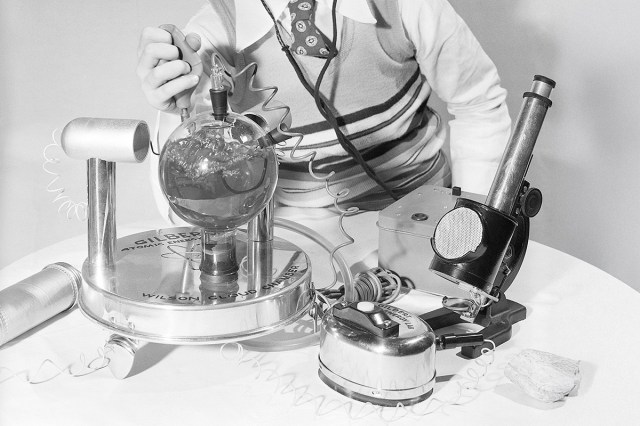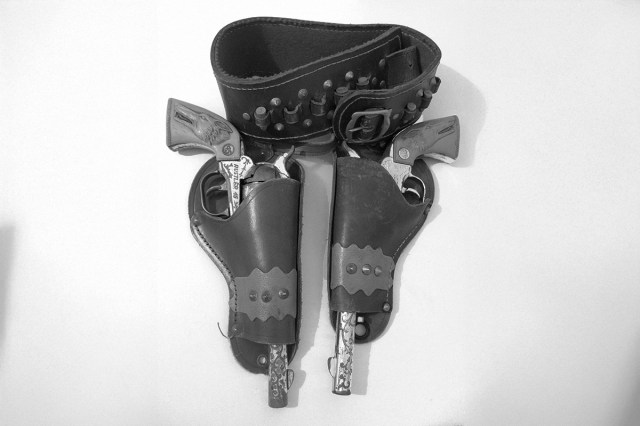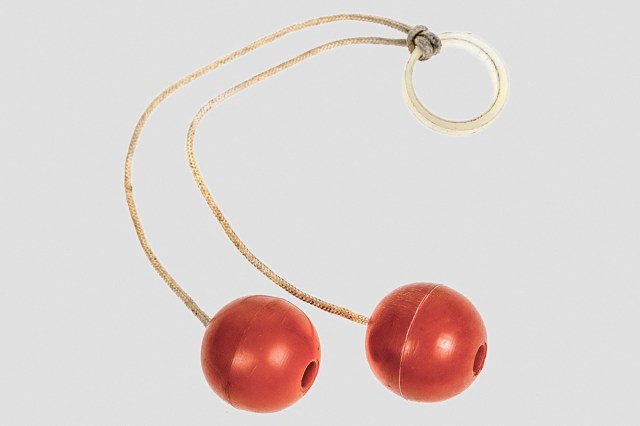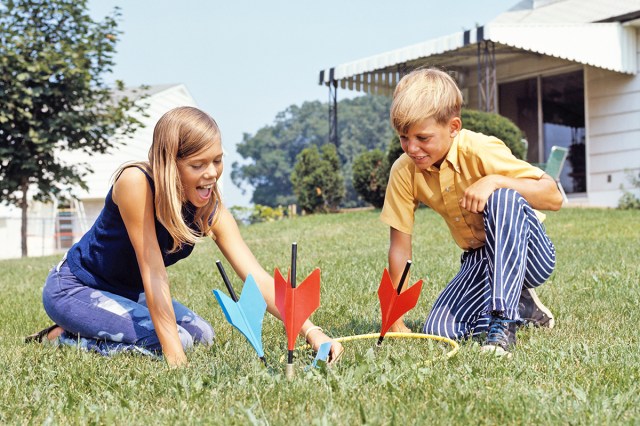
U-238 Atomic Energy Labs
In 1950, the now-defunct A.C. Gilbert Company began to sell the U-238 Atomic Energy Lab, a toy lab set intended to both entertain and educate children. It didn’t come cheap: The product was sold at a hefty price tag of $49.50 (roughly $665 today), which covered the costs of all the equipment and radioactive material inside. Yes, you read that right — the toy included real radioactive material, hence its notorious reputation as one of the most dangerous playthings in history.
Each set came with four tiny jars containing samples of uranium ore. Advertisements boldly claimed that the materials were “certified as completely safe,” which was true in theory, if not practice. A 2020 analysis concluded that handling the jars was no riskier than spending a day in the sun — assuming the jars remained closed.
While the kit featured warnings that stated, “Users should not take ore samples out of their jars,” we all know getting a kid to follow instructions is easier said than done. And if a child were to open a jar and physically handle its contents, they’d be exposed to potentially unsafe levels of radioactivity.
Perhaps fortunately, the product sold poorly, and fewer than 5,000 kits ended up in the hands of young wannabe scientists — though entirely possible that poor sales had more to do with the high cost than any fears about harmful radioactivity. Gilbert stopped marketing the toy by 1952, and the company ultimately went out of business in 1967.

Belt Buckle Guns
Mattel may be best known for Hot Wheels, Barbie dolls, and Fisher-Price toys, but in the 1950s and ’60s it was notorious for creating one of the oddest and most unsafe toys ever produced: a belt buckle that doubled as a working pistol.
A version of the product called the Agent Zero Buckle Gun was released in 1959. This metal-plated belt buckle could be affixed to any normal belt, and with the simple push of a button, it propelled a spring-loaded plastic projectile across the room.
While plastic is comparatively safer than a lead bullet, the idea of giving children loaded weaponry would be unthinkable today. And this wasn’t the foam-padded ammo in your typical Nerf gun, mind you, but rather a plastic pellet that could put an eye out.
The guns were also known to fire off unexpectedly, and that unpredictability made the toy even more unsafe. It was only a matter of time before Mattel realized the hazards of the toy and ceased production.

Glassblowing Sets
Between the open flames and risk for shattered shards of glass, the practice of glassblowing is best reserved for properly trained artisans — but that didn’t stop the A.C. Gilbert Company from manufacturing a glassblowing kit in the 1920s.
This toy was primarily marketed toward science-minded children, aiming to teach them how to blow test tubes and beakers from scratch. It came with several glass tubes, a flame-producing bunsen burner, and a blowpipe, all of which added up to a disaster waiting to happen.
The flames were powerful enough to cause third-degree burns, and bending hot glass in various ways could cause it to shatter if mishandled. Children were also prone to ingest potentially noxious fumes and vapors through the blowpipe, which was a necessary tool for inflating the molten glass.
Given the toy kit was produced more than a century ago, there’s little reliable data as to how many kids were injured as a result of the product. It’s also unclear whether Gilbert stopped manufacturing the toy because of safety concerns or for other unrelated reasons, but what we do know is there were thankfully no models of this glassblowing kit produced after the 1920s.
More Interesting Reads

Clackers
In the late 1960s and early 1970s, clackers were all the rage. The toy was quite simple in its design, featuring two hard balls at the end of a single string. Kids swung the toy back and forth to clack the balls together, but there was one teeny tiny problem: The balls had a reputation for easily shattering and exploding. To make matters worse, early versions of the toy were made of tempered glass, which could fly into people’s eyes or cut their skin.
While manufacturers pivoted to creating clackers from plastic in an effort to make them safer, clackers often still exploded and caused injury. Eventually, those risks became too obvious to ignore. In 1971, the FDA issued new safety standards that effectively got most clackers pulled from shelves.
The toy was also the subject of the 1976 court case United States v. an Art. Consisting of Boxes of Clacker Balls. The case classified clackers as a “mechanical hazard” and also granted the government the right to seize and destroy any clacker balls in the name of public safety.

Javelin Lawn Darts
Javelin lawn darts — or “jarts” for short — were a popular children’s toy from the 1950s until their original metal-tipped design was banned in the 1980s. Hasbro was a leading manufacturer of these pointed projectiles, which caused thousands of injuries and even fatalities.
Playing jarts was similar to playing a game of horseshoes or cornhole. Each box came with two circular targets meant to be placed on grass roughly 35 feet apart, and players would alternate throwing darts, trying to land them in the target.
But this is where danger arose: While jarts weren’t necessarily razor-sharp, the pointed aluminum tips could seriously injure someone. Each jart was also weighted, meaning they’d come hurtling back toward the ground and could harm anyone in their path.
By the 1960s, the Consumer Product Safety Commission began gathering information about injuries caused by toy jarts, and the FDA proposed a ban in 1970. But toymakers and the CPSC reached a compromise that kept them on the shelves — lawn darts could no longer be marketed as a children’s toy.
Even still, they continued to find their way into the hands of adults and children alike, causing an estimated 6,000+ injuries over time. A ban was finally implemented in 1988, and the jarts were removed from stores the week before Christmas.












